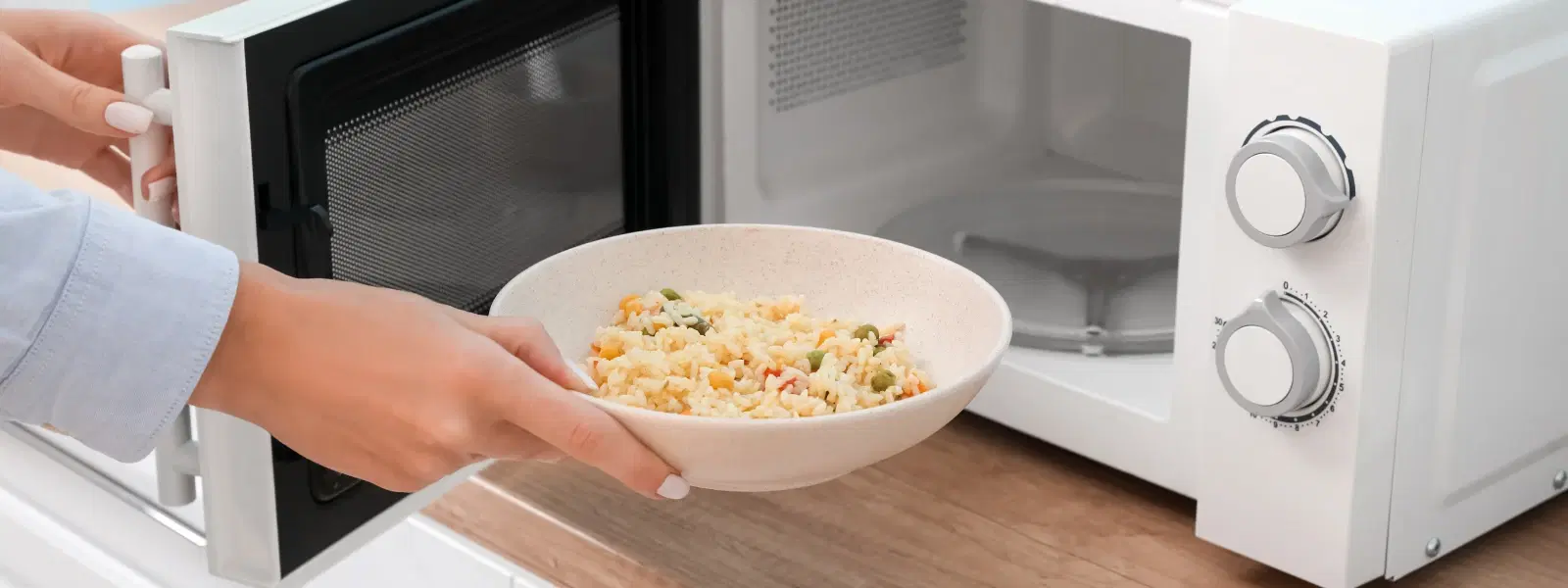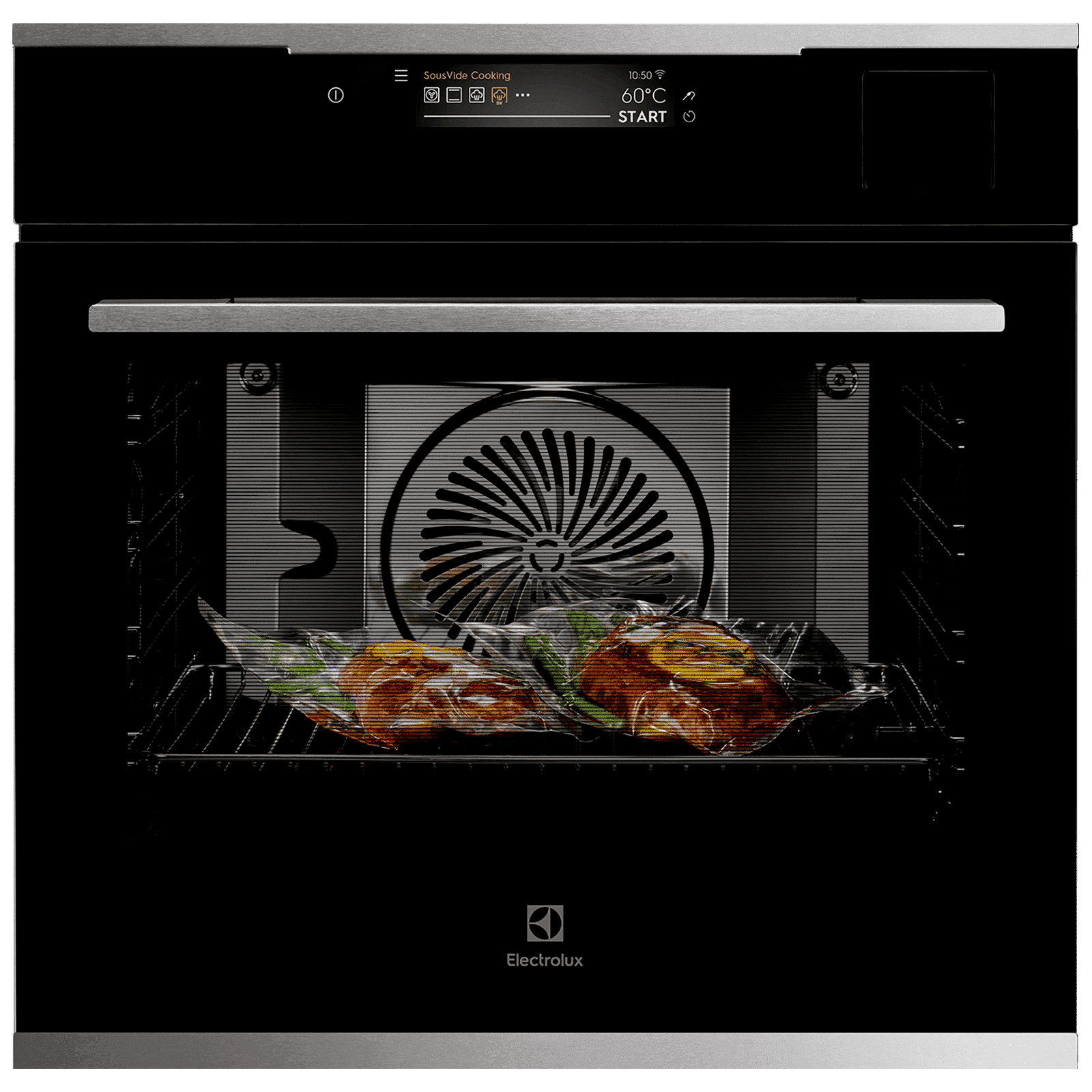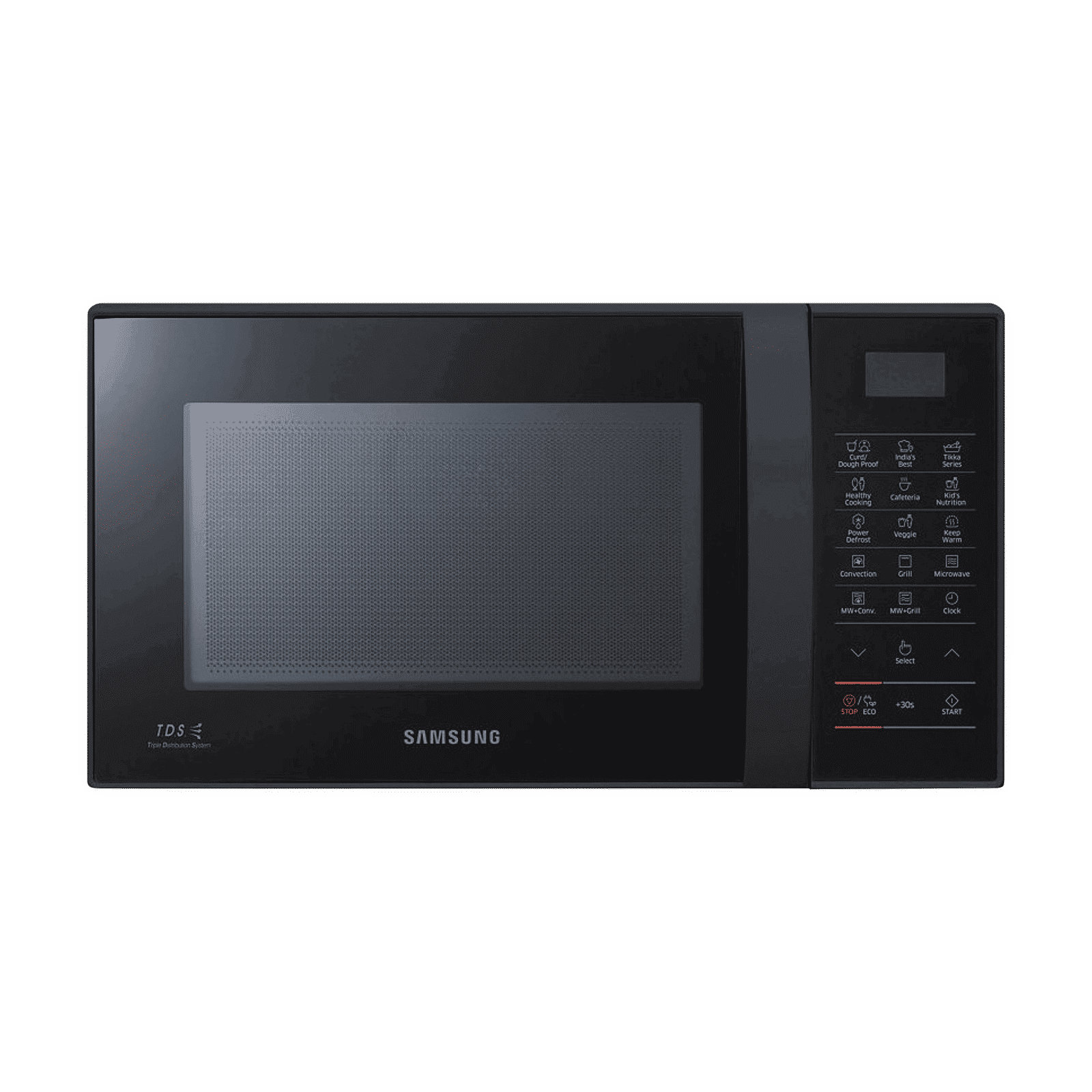
Home Appliances
•03 min read

Buy Electrolux Ultimate Taste 900 70L 60cm Built-in Microwave with SteamPro Technology (KOAAS31X, Black) online at best prices from Croma. Check product details, reviews & more. Shop now!
Ever wondered how your microwave heats food in mere minutes? It’s not magic—it’s science! This blog post unravels the mystery behind microwave technology and explains the working principle of microwave ovens. You will learn about microwave energy, the role of electromagnetic waves in microwaves, and how microwaves heat food by exciting water molecules. Understanding these essentials not only boosts your knowledge but also helps you make informed decisions about home appliances that form an integral part of everyday living.
Microwaves are a type of electromagnetic wave with specific frequencies that are harnessed for cooking. These electromagnetic waves work by interacting with water molecules in food. When these water molecules are exposed to microwave radiation, they start to vibrate rapidly, which in turn creates heat. This process explains how microwaves heat food quickly and efficiently.
Microwaves fall within the electromagnetic spectrum, operating at a microwave frequency of around 2.45 GHz. This specific frequency is ideal because it efficiently excites the water molecules found in most food items. The precise tuning of microwave frequency allows for a powerful yet focused application of microwave energy that results in balanced and effective cooking.
When a microwave is activated, the process known as dielectric heating begins. This is when microwave energy excites water, sugar, and fat molecules in your food. The vibrating molecules produce heat directly within the food, ensuring that the heating is both rapid and energy efficient. This advanced microwave technology is the reason many families enjoy hassle‐free meal preparation.
The magnetron is the heart of the microwave oven. This critical component converts electrical energy into microwave energy. As the microwave magnetron generates the microwave radiation, it sends these waves into the cooking chamber where they interact with the food. The efficient conversion of energy ensures a consistent and speedy microwave cooking process, a key benefit for young professionals and busy households.

Buy SAMSUNG 21L Convection Microwave Oven with Advanced Fermentation Technology (CE76JD-B1/XTL, Black) online at best prices from Croma. Check product details, reviews & more. Shop now!
A microwave oven is composed of several parts that work together seamlessly:
Magnetron: Generates the microwaves that heat your food.
Waveguide: Directs the microwave radiation into the cooking chamber.
Turntable: Rotates food for even heating.
Control Panel: Lets you set the cooking time and power level, making it user-friendly for families, students, and tech enthusiasts alike.
Modern microwaves incorporate several safety measures. One key feature is the shielding provided by the metal mesh in the door which helps prevent any leakage of microwave radiation. Additionally, these appliances clearly indicate which materials, such as porcelain, are safe to use in a microwave, thereby ensuring well-informed, safe usage.
The process is simple and efficient:
The magnetron first generates microwaves, which are then launched into the cooking chamber. The food absorbs this microwave energy, causing water molecules to vibrate and produce heat. This internal heating method sets microwave cooking apart from traditional ovens and makes it a time-saving solution, especially when every minute counts for busy individuals.
Microwave ovens bring several benefits, including speed, energy efficiency, and precise energy transfer during the cooking process—a perfect solution when paired with the smart shopping advantages on Tata Neu. However, while microwaves excel at quickly heating food, they may occasionally cause uneven heating, lack the ability to brown food, and might result in minor nutrient loss.
Did You Know? The Science of Water Molecules in Microwaves
Microwaves heat food by targeting water molecules, causing them to vibrate at high speeds. This vibration generates heat, which is then distributed throughout the food, explaining why dishes with a higher water content warm faster.
Microwaves use radiation to excite water molecules rather than relying on direct heat. It is this indirect method of heating that helps food warm from the inside out.
Some common concerns include the possibility of uneven heating, the appliance’s limitations in browning food, and the relative unsuitability of certain materials like metal when used inside the microwave. Despite these limitations, current microwave models include advanced safety features and user-friendly control panels that address these issues. With smart features integrated on platforms like Tata Neu, customers can enjoy a seamless shopping experience alongside rewarding NeuCoin benefits for every purchase.
Microwaves utilise electromagnetic waves to excite water molecules in food, creating heat through molecular vibration—a process known as dielectric heating.
They use microwave radiation to transfer energy to water molecules, which then produce heat internally, distinguishing them from conventional ovens.
They can sometimes result in uneven heating, lack the ability to brown food, may cause minor nutrient loss, require careful use of materials, and have limited applicability for certain types of cooking.
Microwaves are a marvel of modern technology, utilising electromagnetic waves to heat food efficiently and conveniently. By understanding the working principle of microwaves, their components, and built-in safety features, consumers can better appreciate and utilise this everyday appliance. Whether you are a tech enthusiast, part of a busy family, a student, or a young professional, the simplicity and efficiency of microwave technology can make life just a little bit easier and more rewarding—especially when you earn NeuCoins on Tata Neu to enjoy added benefits and a seamless shopping experience.